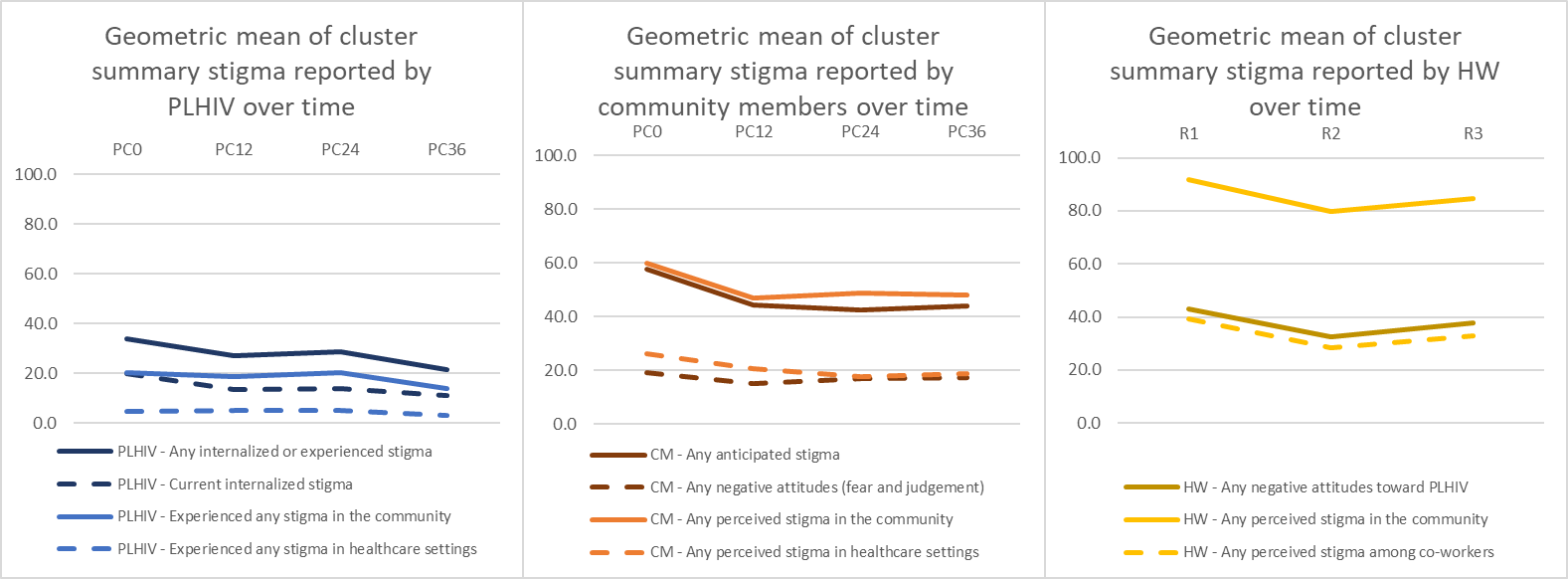HIV Stigma and Universal Test and Treat: Results from the HPTN 071 (PopART) Stigma Ancillary Study
By Triantafyllos Pliakas
Research trials have identified efficacious biomedical, behavioral and structural HIV prevention interventions, including early anti-retroviral therapy for treating people living with HIV. However, combining interventions and successfully implementing them at scale is challenging. Stigma and discrimination have been identified as potential barriers to the implementation of effective HIV prevention and treatment programs at scale. Also, studies measuring the impact of stigma on these programs are rare.
The Stigma Ancillary Study was part of HPTN 071 (PopART), a three-arm cluster-randomized controlled trial to evaluate the effect of a combination HIV prevention approach that incorporates a ‘universal test and treat’ (UTT) strategy on community-level HIV incidence in Zambia and South Africa. The stigma study used mixed-methods to examine (1) whether the PopART combination prevention intervention reduced HIV-related stigma, (2) whether HIV-related stigma acted as a barrier to the implementation and effectiveness of PopART and (3) whether there were changes over time in the dominant drivers and manifestations of stigma in study communities and the health system.
Stigma Ancillary Study researchers presented results during a special session at the AIDSImpact Conference in London on 29 July 2019. AIDSImpact is an international behavioral and psychosocial science conference that addresses issues related to HIV/AIDS prevention, treatment and care, focusing both globally and on specific communities and countries hardest hit by the HIV/AIDS epidemic. The session, “HIV Stigma and Universal Test and Treat: Results From the HPTN 071 (PopART) Stigma Ancillary,” was co-chaired by Dr. Greg Greenwood, program officer, HIV prevention and care continuum, co-morbidities, and translational research branch, Division of AIDS Research, National Institute of Mental Health and Dr. Leickness Simbayi, deputy CEO for research, Human Sciences Research Council. The session was well attended by psychosocial and behavioral researchers, prevention workers, community members, and policymakers from universities and institutes from around the world.
The session began with a presentation from Dr. James Hargreaves entitled "The HPTN 071 (PopART) Stigma Ancillary Study: Design and Methods." He discussed the background and primary findings from the HPTN 071 (PopART) Trial and the design and methods used in the Stigma Ancillary Study. Dr. Anne Stangl followed with a talk on "The Impact of the HPTN 071 (PopART) Intervention on HIV Stigma Among People Living with HIV, Community Members and Health Workers in Zambia and South Africa." In this analysis, researchers compared HIV-related stigma measures between study arms at the final round of data collection (at 36 months) to test whether the intervention reduced HIV-related stigma across three populations: people living with HIV (PLHIV), community members and health workers. Researchers found gradual reductions in all stigma outcomes observed between baseline and at 36 months, regardless of study arm (Figure 1). Also, about one in four PLHIV reported experiencing any HIV stigma at 36 months. In addition, the PopART intervention did not reduce reported HIV stigma among PLHIV, community members or health workers.
Figure 1. Trends in stigma outcomes over time by the study population.

In the next presentation, "Did HIV Stigma Undermine the Effectiveness of the HPTN 071 (PopART) Intervention?", Dr. Graeme Hoddinott discussed the use of quantitative data on HIV-related stigma and viral suppression and qualitative data from a discourse analysis of case narratives. Researchers found viral suppression rates were lowest among PLHIV who did not know or disclose their HIV status, and therefore among whom researchers had the least data on stigma. In addition, viral suppression rates were not associated with most domains of stigma but were found to be lower among PLHIV reporting internalized stigma. Also, the anticipated stigma around treatment was important to care choices, despite a growing sense of normalization of HIV and reduction of enacted stigma.
A trio of researchers then presented "A Little Bit More, a Little Bit Less Stigma: Socio-Structural Factors That Change Community-Level Stigma Over Time in Zambia and South Africa." Bwalya Chiti, Dr. Virginia Bond, and Lario Viljoen discussed their examination of changes in HIV-related stigma over time and place in the context of the scale-up of HIV testing and treatment using qualitative analysis. They found that how stigma changes over time resonated with community members’ experiences and perceptions. Similarly, how stigma changes over time depends on relationships between the community system, health system, PLHIV and those at risk of HIV. This leads to variability at the community level. Finally, increased access to testing and treatment has shifted responsibility for avoiding ill health to PLHIV by knowing one's HIV status, being on treatment and being sexually responsible.
Dr. Hargreaves closed out the presentations by summarizing the ancillary study’s three key findings. First, the PopART intervention did not change levels of HIV-related stigma. Second, HIV-related stigma may have had a small and inconsistent effect in undermining the PopART intervention. Third, forms of HIV-related stigma have shifted over time as testing and treatment have scaled up.
The session concluded with a brief discussion where the audience and presenters had the opportunity to discuss the results of the study. The focus of the discussion was around differences in stigma by age, gender and country consideration for stigma reduction strategies and interventions particularly among transgender women and older PLHIV and the impact of community characteristics, marginalization, population mobility and resilience.
Triantafyllos Pliakas, a member of the HPTN 071 (PopART) Stigma Working Group, is a research fellow in statistical epidemiology at the London School of Hygiene and Tropical Medicine.